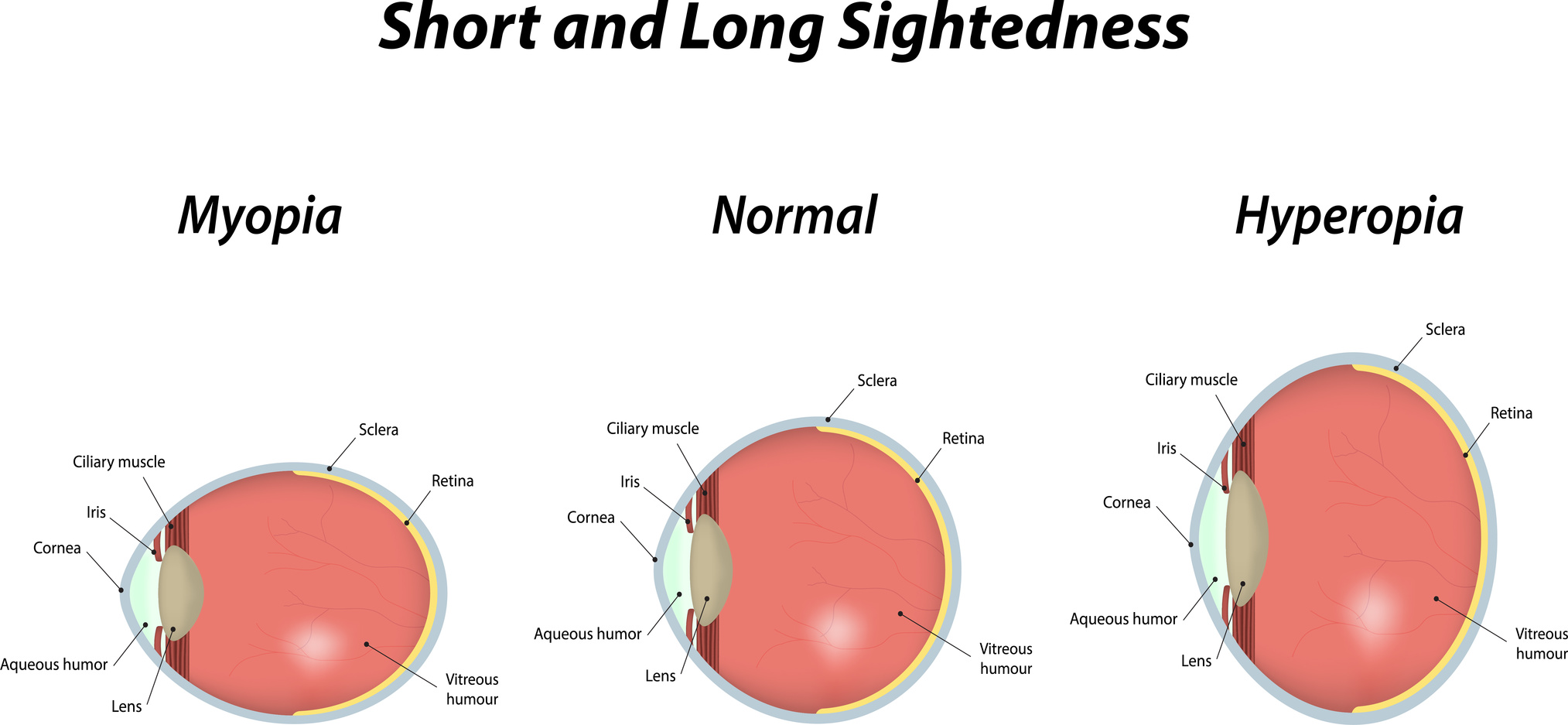Myopia, or short-sightedness, is one of the most common problems to affect vision. This refractive condition affects many people in the UK and around the world, and although simple treatments are available, it can be very frustrating for anyone who suffers from it. Here is a guide to the condition, including the common symptoms and some of the main options for treatment.
Overview of Myopia
People who suffer from myopia have difficulty seeing distant objects. The objects appear to be blurred, whereas close-up objects do not present any problems. As many as one in three people are affected, and the condition can vary from very mild to severe.
Myopia often starts in the teenage years, but it can start even younger, and it tends to worsen as the eye continues to grow. It is often caused by the eyes growing too long so that light cannot focus properly on the back of the retina.
Often it is genetic, but there is also a suggestion that it could be caused by focusing on close objects too much when young, which is another good reason to encourage children to play outdoors. The NHS has a very detailed guide that is worth reading if you want to find out more about myopia.
Diagnosing Myopia
Because myopia often starts in young people, it is a good idea to look out for warning signs in your child. These can include sitting very near to the TV, suffering from regular headaches, rubbing their eyes, and complaining about tired eyes.
Diagnosis is through a vision test. You can arrange to have an eye exam with a local optician, and you should be doing this every two years anyway. Exams are free for children under 16, and they are also free for those under 19 and in full-time education. Following the test, the optometrist will be able to tell you whether myopia is the cause.
Treatments for Myopia
The most common treatment for myopia is to wear glasses. Corrective lenses are specific to a prescription, and the weight and thickness will vary depending on the level of myopia.
Contact lenses are another common option. These are not as noticeable as glasses, and they may be more convenient. However, it is a matter of personal preference.
Another type of treatment is laser eye surgery. This is where a laser is used to burn away sections of the cornea and correct the curvature. There are different types of surgery, and LASIK (laser in situ keratectomy) is the most common. But LASEK (laser epithelial keratomileusis) and PRK (photorefractive keratectomy) are also options.
LASIK especially is very quick, and it is usually completely painless. It is also very effective, and it will often provide a permanent form of treatment. However, it is not a suitable option until the eye has finished growing, meaning it should not be considered until the person with myopia is at least 18 years old.
It is not provided by the NHS. The NHS only covers treatment where failing to treat the eyes would result in more serious problems. Ask your ophthalmologist about which is the most suitable treatment in your situation because you may be unsuitable for some treatments.
You can read about a very helpful resource here that goes into detail about laser surgery, as well as options for financing your treatment.
Look Out for the Signs of Myopia
Always be on the lookout for the signs of myopia, especially in your children. If you notice them having difficulty seeing objects that are far away, or complaining of headaches, make sure you get checked out. If they do have myopia, they will be able to wear glasses or contacts to see correctly. And once they are over 18, they might want to look into the option of laser surgery to treat their short-sightedness for good.
Lucas Cole landed a job at his local opticians just under a year ago. He enjoys writing articles for health blogs on the knowledge he has picked up through work.



Leave a Reply
You must be logged in to post a comment.